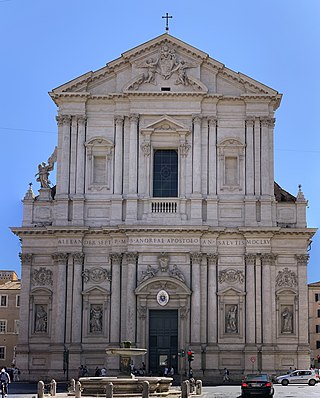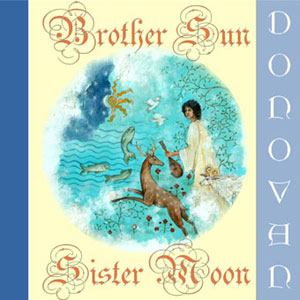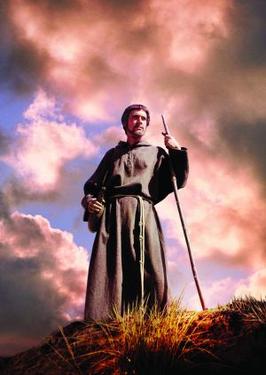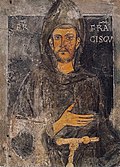Plot
Francesco, spoiled son of wealthy textile merchant Pietro Bernardone, returns from fighting in the war between Assisi and Perugia. Illness has forced him to leave the war. Francesco is tormented by visions of his past when he was a boisterous, arrogant youth. During a long recovery, he finds God in poverty, chastity and obedience, experiencing a physical and spiritual renewal.
Francesco recovers. However, to his parents' consternation, he spends most of his time surrounded by nature, flowers, trees, animals and poetry as he becomes reluctant to resume his previous lifestyle. Pietro's obsession with gold now fills Francesco with revulsion, creating an open confrontation between them.
One day Francesco wanders into the basement and feels the heat and humidity of the dye vats, seeing the workers with their families laboring in the heat without rest. Rejecting his father's offer to let him take over the business, he instead pulls the laborers out of the building to enjoy the daylight. Then he throws the textiles stored by his father out of the window to the poor gathered below. Francesco invites his father to join in. Pietro beats Francesco, drags him to the bishop's palace and humiliates his son. Lovingly, Francesco renounces all worldly possessions and his middle-class family including the name "Bernardone", removes his clothing and leaves Assisi, naked and free from his past, to live in the beauties of nature as an ascetic and to enjoy a simple life as a man of God.
Francesco goes to the ruins of the chapel of San Damiano, where he hears God's voice asking him to "restore my church." Believing that God means San Damiano, Francesco begins to beg for rocks to rebuild the church. Much to the dismay of his family, some of Francesco's friends join him. He gradually gains a following from the sons of the wealthy, who begin to minister among the poor.
The bishop refuses to stop Francesco, since he is rebuilding a church and performing the works of mercy Christ demands of His followers. Francesco's friend Bernardo joins him after returning from the Fourth Crusade.
Clare, a young woman also from a wealthy family, serves and cares for lepers living near the town. She joins the brothers. Meanwhile, in Assisi, the nobility and wealthy merchants protest against Francesco and his group, worried about them corrupting the town's youth. They command Francesco's friend Paolo to stop the so-called "minor brothers."
One day the rebuilt church is set on fire, and one of Francesco's followers is killed. Francesco blames himself, but cannot understand what he has done wrong. He decides to walk to Rome and to seek answers from Pope Innocent III.
In Rome, Francesco is stunned by the wealth and power of the papal court. In front of the Pope, Francesco breaks from reciting Paolo's carefully prepared script and calmly protests against pomp and worldliness, reciting some of Jesus' words from the Sermon on the Mount to show that Christ's teachings are totally opposite to Rome's obsession with wealth. The cardinals, bishops and abbots of the papal court feel insulted. Francesco and his friends are expelled. Accepting his admiration for Francesco, Paolo decides to join them. Francesco tries to protect Paolo, saying that he is not one of them, but his friend insists on joining the friars, convincing Francesco of the sincerity of his conversion. They are put out with the others.
Pope Innocent, seemingly waking from a dream, orders Francesco and his friends to be brought back. The Pope addresses Francesco: "In our obsession with original sin we have forgotten original innocence." The Pope admits that when he was a young curate, he thought with the same idealism as Francis "until he became caught in the entrapments of Church Government". He confesses that with the centuries, the church had acquired a lot of wealth and power and that seeing the extreme poverty of Francis and his companions, Pope Innocent remarks "has brought us (the established church) all to shame". In language from one of the Psalms, Innocent prays that Francesco's order may "flourish like the palm."
Then to everyone's astonishment, Pope Innocent kneels, kisses Francesco's feet and blesses him, his companions and grants them permission to establish their holy order of friars. One of the final lines places the sincerity of the Pope's response in question when a cardinal, observing what the Pope has done, comments to a bishop: "Don't be alarmed, His Holiness knows what he is doing. This is the man who will speak to the poor, and bring them back to us."
The film finishes with Francesco walking alone into the countryside to the sound of the title song "Brother Sun and Sister Moon."
Reception
Brother Sun, Sister Moon received mixed reviews on its release. Roger Ebert harshly criticized the film, writing that it had "an excess of sweetness and light", and that its dialogue consisted of "empty, pretty phrasing". The New York Times reviewer Vincent Canby similarly wrote that the film "confuses simplicity with simple-mindedness". Canby contrasted it negatively with The Flowers of St. Francis , a 1950 film on the same subject. Both reviewers especially criticized the scene where Francis appears before Pope Innocent III, calling it gaudy and excessive. Ebert wrote, "does the Pope always have 200 divines on hand just to hold an audience for a few barefoot monks?" [5] [6]
However, Christopher Hudson of The Spectator called Brother Sun, Sister Moon "a beautiful and simple film" and especially praised its cinematography, though he acknowledged "the limitations of the script". [7]
On review aggregator website Rotten Tomatoes, the film holds an approval rating of 42% based on 19 reviews from critics, and an average rating of 4.9/10, while holding a rating of 77% from audiences, with an average rating of 4/5. [8]


















